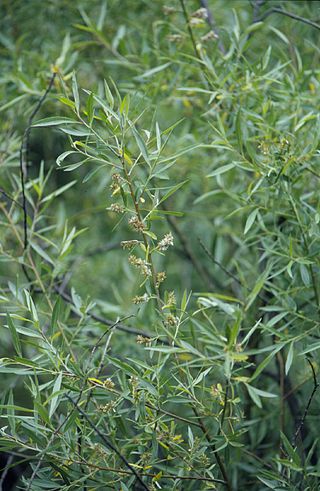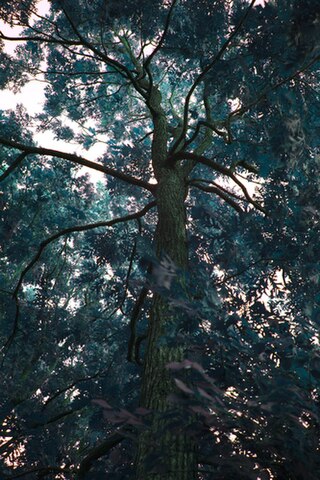Related Research Articles

Genista is a genus of flowering plants in the legume family Fabaceae, native to open habitats such as moorland and pasture in Europe and western Asia. They include species commonly called broom, though the term may also refer to other genera, including Cytisus and Chamaecytisus. Brooms in other genera are sometimes considered synonymous with Genista: Echinospartum, Retama, Spartium, Stauracanthus, and Ulex.

Draba is a large genus of flowering plants in the family Brassicaceae, commonly known as whitlow-grasses.

Seseli is a genus of herbaceous perennial plants in the family Apiaceae. They are sometimes woody at base with a conic taproot. Leaf blades are 1–3-pinnate or pinnately decompound. Umbels are compound, with bracts few or absent. Petals are white or yellow, and the fruit ovoid or ellipsoid.

Salix geyeriana is a species of willow known by the common names Geyer's willow, Geyer willow and silver willow. The type specimen was collected by the botanist Karl Andreas Geyer, for whom it was named. Its conspicuous, yellow flowers begin to bloom as early as March, to as late as the end of June.

Prunus subg. Cerasus is a subgenus of Prunus. Species of the subgenus have a single winter bud per axil. The flowers are usually in small corymbs or umbels of several together, but some species have short racemes. The fruit is a drupe and has no obvious groove along the side. The subgenus is native to the temperate regions of the Northern Hemisphere, with two species in North America, four in Europe, two in North Africa, and the remainder in Asia.

Quercus × bebbiana, known as Bebb's oak, is a naturally occurring hybrid of white oak and burr oak. It occurs where their ranges overlap in the eastern United States and eastern Canada. It was named for Michael Schuck Bebb (1833–1895), an Illinois botanist who specialized in willows (Salix). Its parents are both placed in Quercus sect. Quercus.
Salix bhutanensis is a shrub or small tree from the genus of willow (Salix) found in Nepal, Bhutan, and Tibet. It has young, densely brownish green tomentose hairy branches and 3 to 5.5 centimeters long leaf blades.
Salix dissa is a low shrub from the genus willow (Salix) with usually 1 to 3 centimeters long leaf blades. The natural range of the species is in China.
Salix ernestii is a species in the genus of willow (Salix) and grows as a shrub. The leaf blades are about 11 centimeters long. The natural range of the species is in China.
References
- ↑ "Salix L." Board of Trustees of the Royal Botanic Gardens, Kew. Retrieved 9 September 2020.
- ↑ "Salix". The International Fossil Plant Names Index. Retrieved 12 Aug 2023.